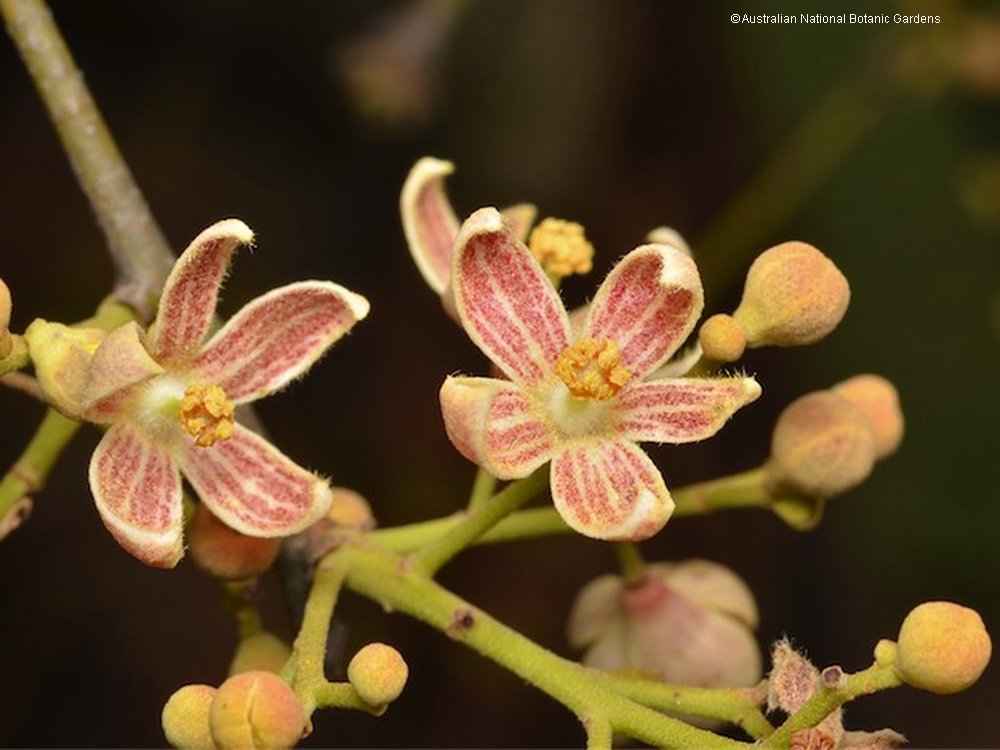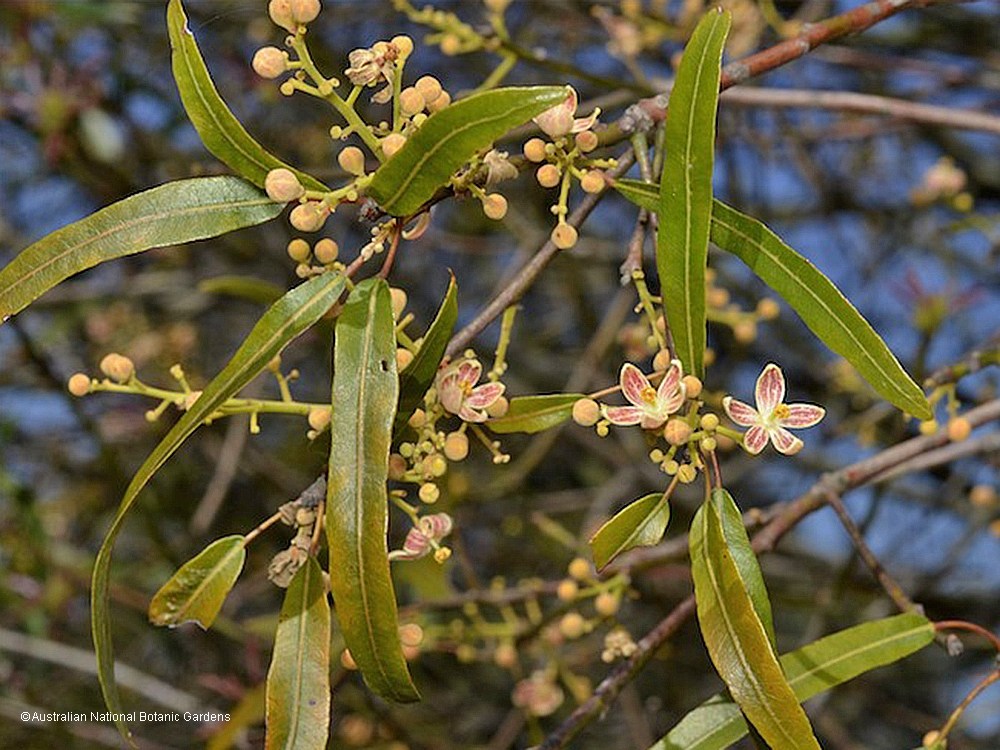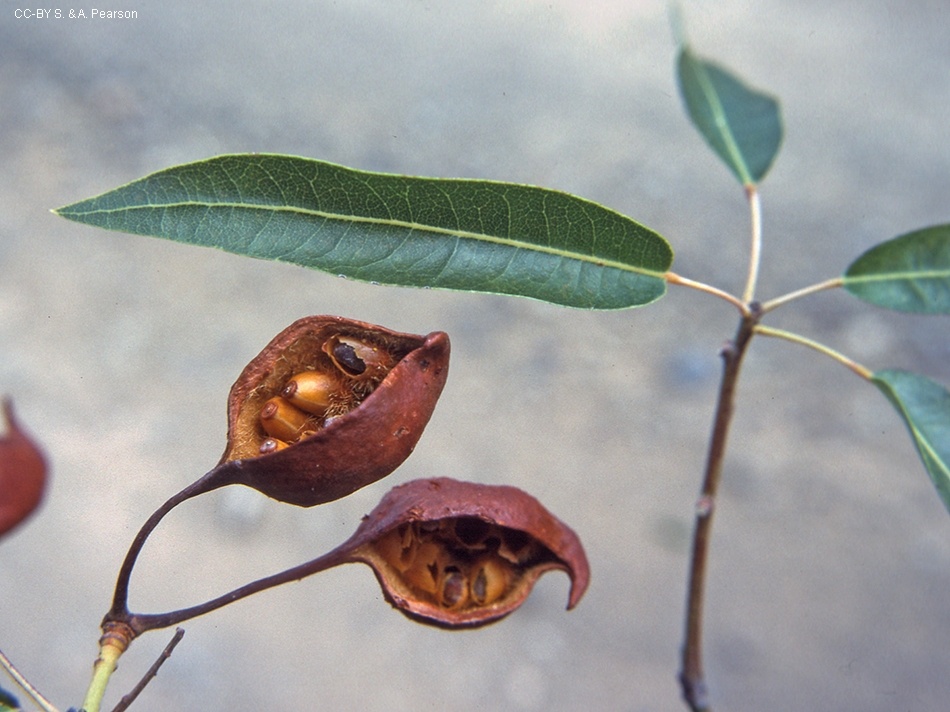Australian Tropical Rainforest Plants - Online edition
Brachychiton rupestris (T.Mitch. ex Lindl.) K.Schum.




Schumann, K. in Engler, H.G.A. & Prantl, K.A.E. (1890), Die Naturlichen Pflanzenfamilien 6(49-50): 96.
Queensland bottle tree.
Trees 10-25 m tall, deciduous or semi-deciduous. Bark dark grey, fissured and tessellated on trunk. Trunk often cylindrical and bottle-shaped.
Mature leaves simple and alternate. Stipules caducous, oblong-lanceolate, about 2-3 mm long, covered with short stellate hairs. Petioles terete, 1-3 cm long. Mature leaf blades linear-lanceolate to lanceolate, 4-13 cm long, 0.4-2 cm wide, margin entire, to very slightly crenulate. Penniveined, reticulate veins more or less flush to slightly raised above and below leaf blade. Leaf blade shiny above, paler below. Juvenile leaf blades dimorphic, simple linear leaves to 15 cm long, petioles to about 2 mm long, and ± digitately compound or deeply digitately lobed leaves, leaflets or lobes 3-9, linear to lanceolate to linear-lanceolate 4-14 cm long, 0.3-1 cm wide, petioles 3-15(-18) cm long, undersurface bronze brown in dried specimen somewhat darker than above (adaxial surface).
Inflorescence axillary, open, paniculate, 10-30 flowered, developing after leaves have fallen. Monoecious, flowers unisexual. Perianth 5 lobed, about 5-10 mm long, 13-18 mm diam., minutely hairy on the outer surface and stellate tomentose and glandular hairy inside, cream, with pink to red markings along inside of each perianth lobe. Floral nectaries absent. Male flowers: at least 15 anthers borne on a stalk or staminal column, anthers yellow, to 1.6 mm long; remnant ovary or carpelodes surrounded by anthers at apex of column. Female flowers: 15 staminodes to 0.9 mm long at base of ovary. Ovary: 5 free carpels, pubescent, glandular hairy along margins, to about 2-3 mm long; styles about 1.2-1.8 mm long; stigmas about 1.2 mm long.
Features not available. See comments on juvenile leaves above.
Endemic to Queensland, occurs in CEQ south of Mackay to near the New South Wales border, and extending inland to Mitchell and Warrego Pastoral Districts. Altitudinal range from near sea level to 600 m. Brachychiton rupestris is an emergent dominant species in semi-evergreen or semi-deciduous microphyll vine thickets and occasionally in low semi-evergreen microphyll vine forests.
Distinguished from Brachychiton compactus by its linear-lanceolate leaves, its more open inflorescences with fewer flowers and its follicles with more incurved apices.
1201





